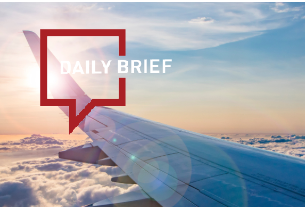The world of Big Data is evolving. 2018 was a remarkable year, with previously arcane fields like machine learning and data privacy entering the zeitgeist for the first time.
The travel industry has kept pace with this rapid evolution and expansion.
Big Data and the fruits of monetising it effectively are now the subject of new, dedicated conferences in the industry (e.g. the IATA Aviation Data Symposium). Every Airline, OTA and Loyalty programme that use travel retailing as a strategy either has a big data programme planned or already being executed. Indeed, it is now so commonplace that we have finally moved away from calling to ‘Big Data’ to what it really is – just ‘Data’.
2019 is shaping up to be an exciting year for everybody working with Data in the travel industry. With this in mind, what are the top five trends in Data for 2019?
#1. Personalisation transitions from being a ‘nice to have’ to a ‘must have’
Personalisation works. Period. There are countless studies that demonstrate how personalisation powered by Data in e-commerce can increase conversion rates, re-purchase rates, cross-sell and generally improve marketing effectiveness.
Despite this, in travel retailing, personalisation continues to be seen as optional – a ‘nice to have’.
This is not how Amazon, Google, Netflix or Booking see it. We all know that personalisation, in the form of curated product discovery, contextual search and real-time personalised recommendations, are a central feature of the customer experiences that these companies offer.
This contributes to not only the enormous profitability of these companies, but also their impressive Customer Satisfaction scores. In the United States, the latest Average Customer Satisfaction Index score is 77. Amazon, Google, Netflix and Booking.com beat the index – sometimes by a huge margin.
In 2019, we will see a shift in the perceived importance of personalisation amongst travel retailers. Personalisation will go mainstream and fall into the ‘must have’ category for the majority of travel retailers.
The driving force behind this will be consumer expectation. If, as a travel retailer, you don’t offer personalisation by default, then consumers will drift towards the convenience and familiarity of competitors that do.
#2. Data privacy concerns persist
Some of the more observant readers of this article may have noticed in the diagram above that Facebook does not make it into the ‘all-stars’ list for customer satisfaction. This is arguably attributable to persistent data privacy concerns.
Data privacy regulations such as the E.U.s’s General Data Protection Regulation (GDPR) used to be an arcane area, of interest only to data professionals. But now, following the public failures of Facebook and other Internet giants to fully protect the personal data of their users, the significance of data privacy and security is understood by the majority of people across the United States and Europe.
In 2019, we will see this topic persist in the media. Some tech giants, like Apple, will openly support the implementation of new regulations in the US that will further dilute the influence and control of the new ‘Industrial-Data Complex’ that Tim Cook has argued has emerged. Other tech giants that have a direct dependence on Data as a driver of revenue and profits will seek self-regulation for the industry.
What we are seeing, and what GDPR and similar new data privacy regulations globally are enabling, is a fundamental shift. A shift where the ownership of data is moving from the corporations and private enterprises that manage personal data, to the individual consumers and citizens from which it is derived i.e. the ‘data subjects’.
This is a good thing. As Tim Cook, the CEO of Apple argues: “Technology’s potential is, and always must be, rooted in the faith people have in it.”
#3. ‘Fast-Moving’ and ‘Slow-Moving’ Customer Data come together
Up until now, Data used for personalized offer management, re-marketing and re-targeting has been managed inside two separate silos.
The first silo is ‘fast-moving’ customer data. This tracks the short term or immediate intent of a customer to purchase a product and it is usually captured by ‘tagging’ web sites to monitor user search activity via cookies. The systems used to store and manage this data are called Data Management Platforms (DMP’s) and there are many well-known vendors today serving this market such as Adobe.
The second silo is ‘slow-moving’ customer data. This tracks the longer term, natural tendency of a customer to purchase a product or category of products and is based on real transactional history e.g. Passenger Name Records (PNR’s), as well as demographic information such as age, home location etc. Just because it is ‘slow moving’ data does not mean it is less valuable. In fact, this category of data is potentially much more valuable than the ‘fast -moving’ data described above. This is because it is hard transactional activity and can be used for look-alike modelling to predict the propensity a consumer has to purchase a particular type of product and within a particular price range.
In 2019, we will see the more sophisticated travel retailers start to bring these sources of data together to increase the precision and timing of their personalised offers. Clearly, if you know what travel products people are searching for right now and you can combine that with the deeper, more persistent insights of propensity modeling, you have a formidable advantage if your goal is to generate a personalised offer that a customer will respond positively to.
#4. Geo-location marketing and analytics grows in importance
Geo-location analytics is growing in importance in travel retailing for obvious reason; if we can track where customers are physically, then we can make better in-trip recommendations and offers, especially for events and other ground ancillaries.
In many respect, geo-location marketing and analytics is an extension of personalisation by creating contextual experiences and offers for customers while they travel. If your strategy as a travel retailer is to start accessing your customer’s ‘second wallet’ i.e. the money they spend during their trip, then geo-location marketing and analytics is a must-have.
In 2019, we will see the 3 primary categories of geo-location marketing and analytics – geo-targeting, geo-fencing and beacons – firmly enter the mindset of marketing teams in travel retailing for the first time. But it will take another year or two before this technology enjoys widespread adoption in this market. This is because travel retailers will first prioritise the build out of Customer Data Platforms (CDP) and Data Management Platforms (DMP) so they can implement personalisation on their primary digital channels as their foundation.
In many respects, building a Customer Data Platform is a pre-requisite to successfully pursuing geo-location marketing and analytics. Similar to the principles of combining the fast moving and slow moving customer data described above, the value of geo-location data is only realised when it is combined with the slower moving demographic and propensity data that can provide the context and meaning needed to generate a meaningful personalised offer or experience for a customer.
#5. Customer lifetime modelling grows in importance
The fifth and final trend for 2019 is arguably the most important for Airlines, OTAs and Loyalty Programmes.
We all know that customer acquisition costs have increased steadily over the past few years. Advertising with Google is expensive. Advertising with Facebook is expensive. Re-targeting and re-marketing is expensive. Traditional media advertising is still expensive. And you don’t even know if it’s making a significant difference to your bottom line!
In this environment, insights like customer lifetime value scores are growing in importance. This is because they can determine exactly how much to invest in a re-targeting, re-marketing, email campaign or real-time personalised offer for a specific person. If the customer’s lifetime value score is high, then invest in a generous offer or discount, safe in the knowledge that you will earn that investment back from the customer in the future. If it is low, then don’t offer a discount.
In fact, every personalised offer that involves an incentive for the customer to increase the probability of conversion should be framed in the context of their customer lifetime value score. It is the only way to ensure the offer is economically justifiable.
But what does all of this mean?
The over-arching theme for 2019 is that Data is becoming the primary driver of success in e-commerce.
In Mary Meeker’s 2018 Internet Trends report, this Data trend is clear highlighted. We see this in the apps we use every day.
Features like curated product discovery, personalisation and 24x7 recommendations are now a normal user experience for us all; from Amazon in the US and Europe, to Alibaba in China and Flipkart in India.
This was not always the case.
In the 1990's, e-commerce was much more transactional and was all about utility – remember eBay and Amazon when they started out? And before the Internet, consumer retail was all about brand and demographics. Data has 'come of age' and is now taking centre-stage in e-commerce across every channel, industry and geography.
Some of the larger and more technically sophisticated travel retailers have recognised this Data trend and have started major Data programmes around their e-commerce operations that firmly takes them in this direction.
In 2019, this Data trend will extend broadly across travel retailers of all shapes and sizes, and Data will become centre stage as the key success driver in every e-commerce operation.
So, lets ask: what are you going to with Data in 2019?
Click here to download the book




